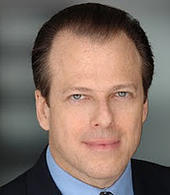The Business of Art: A Conversation with Maxwell Anderson, Eugene McDermott Director, Dallas Museum of Art
Maxwell Anderson is The Eugene McDermott Director of the Dallas Museum of Art. Prior to joining the DMA in January 2012, he was The Melvin & Bren Simon Director and CEO of the Indianapolis Museum of Art, the Alice Pratt Brown Director of the Whitney Museum of American Art, the director of the Art Gallery of Ontario in Toronto, Canada, and director of the Michael C. Carlos Museum at Emory University in Atlanta, Georgia. He holds a PhD in art history from Harvard University and began his career as an assistant curator in the Department of Greek and Roman Art at the Metropolitan Museum of Art in New York City. He has written numerous articles and introductions to books and exhibition catalogues, and co-authored several books on ancient Roman art. His most recent publication is The Quality Instinct: Seeing Art Through a Museum Director’s Eye (American Association of Museums Press 2012).
NYFA: Can you describe a typical work day for you at the Dallas Museum of Art?
MA: Not too easily! Every day has a rhythm connected with the DMA’s planning cycles, but these days the curve balls come from every possible direction, whether a press inquiry, a donor’s generous impulse, a curator’s new find, or any of a variety of other surprises. It’s part of why the job is so fun.
NYFA: You’ve been the director of five museums during your career so far. What motivates you to move on from one place to the next? What drew you to the DMA?
MA: It’s not just seasons that change–every museum has its cycles of change. The average tenure of a museum director is about 4.5 years, and I’ve been at this for 25, so I am on track! The motivation for a director to try a new challenge may have to do with a sense that you’ve accomplished what you can, or a sense that more compelling opportunities await you in another city. The move to the DMA was simple enough: anchoring the largest arts district in North America, it is in the fourth largest metropolitan area in the US and seems poised to do great things, with one of the most generous boards in the world.
NYFA: Last fall the DMA returned to a policy of free general admission and instituted a new program that offers free membership. What influenced this course of action and why was it important to you that the museum change its policy?
MA: We’re a municipal museum, supported in part by the taxpayers of Dallas. It should always be in our minds to look for the best kind of institutional decisions and seek to support them. Going free is less of a risk to museums outside of Manhattan and San Francisco, where tourists are a dominant factor in museum admissions. That’s less the case elsewhere in the nation.
NYFA: You were a Leadership Fellow for the Chief Executive Leadership Institute at the Yale School of Management, where you interacted with other CEOs of leading companies. What did you take away from that experience?
MA: I’ve enjoyed experiences at several universities, and Yale’s School of Management attracts some of the brightest minds among developing professionals. It was a great opportunity to be steeped in the work of a brilliant faculty and a determined, imaginative student body, and to step back from running something to evaluate how the museum field is changing. It led me to reflect on what I think of as a misguided commercial paradigm that has become fashionable among American museums.
NYFA: What advice would you give to someone who is interested in a career in museum management?
MA: Learn at least a second language, get your foot in the door as an intern, and make yourself indispensable.
NYFA: What kinds of traits do you find most valuable in your employees?
MA: I am always interested in high-energy people who like to tackle problems and offer up solutions, even if they’re not guaranteed to work. It’s dispiriting to have negativity at the work place, when the alternative of seeking to improve your setting is available. Passive employees who wait for direction are not likely to advance very far.
NYFA: You’ve shown throughout your career that you’re committed to your ideals – transparency in museum performance measures, ethical standards for acquisition practices, and the rights of artists to receive fair tax treatment when they donate their work to museums, for example. How do you stay true to your beliefs and maintain your course of action when it becomes challenging to do so?
MA: It’s exactly when it becomes challenging that staying true to your beliefs matters most. Transparency can just as easily reveal poor judgment as good judgment or even luck. But I find it easier to motivate people if we are candid about our situation than constantly trying to sugar-coat it.
NYFA: You have a reputation for being an innovative and visionary leader, especially where technology initiatives are concerned. You helped launch ArtBabble, an international online platform for museums to share video content, and the DMA has newly created the Laboratory for Museum Innovation, a program that will develop pilot projects in the areas of collections access, visitor engagement, and digital publishing. Where do the seeds for these ideas come from? Why do you place emphasis on these types of initiatives?
MA: Thank you for the nod — I would simply offer that a wired world makes silos a thing of the past, and that by connecting with others, seeking to build best practices consortially, and taking informed risk in service of the museum field, we’re better off than thinking about one museum at a time.
NYFA: One theme apparent throughout your career is the desire to collaborate with other institutions. Most recently, you’ve launched an art-for-expertise exchange program, wherein the DMA offers its expertise to museums in countries such as India, Brazil and China in exchange for the loan of significant works of cultural heritage. What are some of the benefits you’ve seen result from such partnerships?
MA: I was in China in November and am heading to Brazil in June — it’s too soon to tell, but we are in several exciting conversations that should yield results in the next year. If nothing else we are opening a dialogue about the value of exchanging art for expertise, instead of renting art. I don’t believe in monetizing art loans when we are educational institutions, not for-profit concerns.
NYFA: What contemporary artists are you particularly interested in right now?
MA: We’re co-organizing a retrospective of Jim Hodges, which is a very exciting project that will bring even more attention to a very deserving talent of his generation.
NYFA: Most nonprofit organizations have a mission statement. As an individual, what would you say yours is?
MA: A fair question! If I had to pin myself down, it would be something along the lines of giving voice to artistic intention as the best way to combat intolerance, ignorance, and apathy.
Interview by Michon Ashmore, Digital Advertising Program Associate for NYFA Classifieds. Michon worked as a newspaper reporter and communications/marketing specialist before coming to work at NYFA in 2010. She holds a BA in art history and an MA in classical archaeology from Florida State University.




